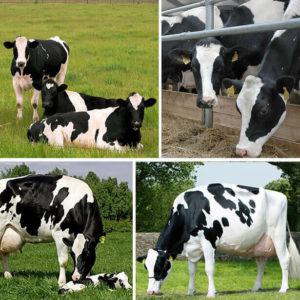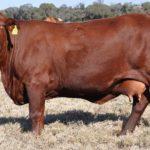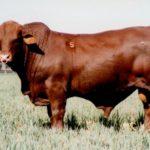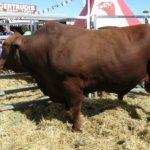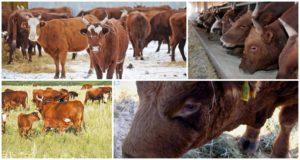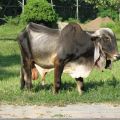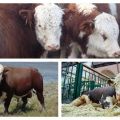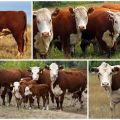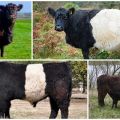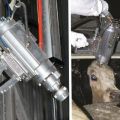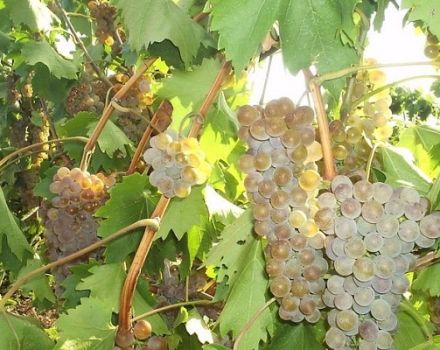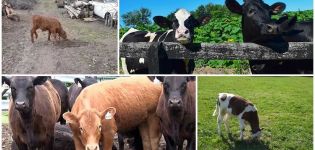Description and characteristics of santa gertrude, keeping cows of this breed
Description of santa gertrude - cow breeds bred in the USA from the best producers of beef cattle breeds. The pedigree traits inherited by the cattle of this breed combine the best qualities of their ancestors - these are endurance, the ability to quickly gain weight, large size, adaptability to different climatic conditions and resistance to piroplasmosis (a disease that develops after a bite of blood-sucking insects).
History of the breed
To obtain the first individuals of the breed, breeders of the state of Texas in the United States, starting in 1910, crossed Indian-type zebu bulls and Shorthorn cows. Initially, cattle intolerance to extreme heat conditions became a prerequisite for breeding a new breed. Cows died from numerous infections resulting from the bites of blood-sucking insects (which are very common in hot climates).
As a result of the experiments of breeders, the breed appeared, but the first batches were subjected to careful research. The best, according to scientists, were individuals in whose body the blood was contained in the following proportions:
- 3/8 from bulls zebu;
- 5/8 of Shorthorn cows.
In 1920, a parental pair was selected, from which the Monkey bull was obtained and raised. During his research, he had high-quality genetic material, and Monkey's offspring were considered elite producers of the breed.
A separate breed of cattle was recognized only in 1940, after which cattle began to spread around the globe. Now Santa Gertrude is bred not only in the USA, but also in Asia, Africa and since 1956 in Russia (Volga region, Caucasus, Ural).

Description and characteristics of santa gertrude cows
The appearance of the cattle is massive. The color is dark cherry, there may be light blotches on the skin of the abdomen. From bulls, zebu cows got a small hump on their backs. You can recognize the representatives of the breed by traits formed over many decades:
- short hairline that shines in the sun and shines;
- small head;
- thin ears hanging down;
- short straight neck;
- developed musculature in the meat parts of the body - on the chest, back, back;
- steady, not very long legs.
Adults reach a large mass and a height at the withers of about 140 centimeters. Bulls weigh 800-1000 kilograms, cows - 550-600 kilograms. Calves are born with a mass of 25-40 kilograms, but they grow quickly. The average daily weight gain is 850-900 grams. The daily milk yield of first-calf heifers is 5-10 liters of milk with a fat content of 4-6%.
Advantages and disadvantages
Thanks to the careful efforts of the breeders, it was possible to breed a breed that is unpretentious to weather conditions, blood infections and with high meat productivity.
This cattle has many advantages:
- high weight gain, even in hot climates with a high-quality diet;
- thick skin that protects animals from frost;
- the presence of sweat glands, which perform a thermoregulatory function and prevent overheating in the sun;
- pronounced maternal instinct in females;
- no problems during calving;
- savings on livestock keeping, especially for areas where the stall period is short;
- lack of mortality and immunity to diseases such as piroplasmosis, thelaziosis, theileriosis.
Santa Gertruda cattle produce high quality meat with a fat content of 20% and a pronounced taste.
Subtleties of maintenance and care
Farmers have no particular problems with keeping these cows. Livestock is adapted to driving long distances, can be in the heat and cold for a long time. The maximum weight gain is observed in the autumn, with a high-quality diet. Thanks to the thick skin and thick, but short, wool animals do not freeze. A stall with dry and clean bedding is sufficient for them.
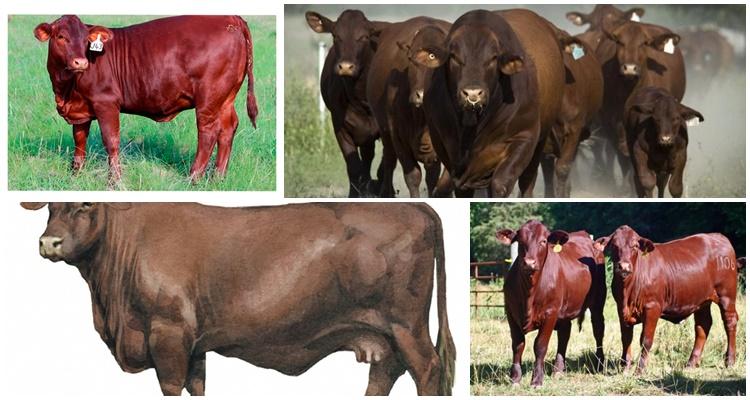
Feeding
Grazing cows over large areas allows the cattle to find a variety of rough and soft grasses. If there is not enough herbs, you can add hay with salted barley to the diet; in winter, Santa Gertruda uses reeds. The menu consists of:
- corn silage;
- roughage;
- haylage;
- legumes and cereals;
- molasses;
- bone meal;
- phosphates.
Cattle of this breed do not require a lot of water, but it should be present in the drinkers, clean and fresh. In the spring, it is recommended to increase the amount of greens in the diet, and closer to autumn - coarse vegetable feed.

Reproduction nuances
Calving with Santa Gertruda cows is easy and rarely requires medical procedures with the participation of a veterinarian. Sexual maturity occurs at 18 months, with the first calving at 30 months. Up to 6 months of age, the calf feeds on breast milk, but from two months it can be fed with hay.
It is recommended to graze young animals on the same pasture with adults. Cows have a wonderful maternal instinct, they do not let the calf go far away from them.
The best time for calving is spring. Farmers need to remember that during sucking, the calves and the cows themselves are shy, so you should not bring strangers into the corral and make loud noises.
Possible diseases
Cattle of the Santa Gertruda breed have excellent health. They are not susceptible to infectious diseases and have strong immunity. Like other breeds, santa gertruda cows sometimes have tympania (overfilling of the rumen with gases), atony (insufficient activity of the proventriculus during overfeeding). In order to prevent infection with mass infections (foot and mouth disease, brucellosis, tuberculosis), routine vaccinations are carried out.
Santa Gertruda is an excellent meat breed that farmers in many countries have come to love. Slaughter yield of cattle is 70%, meat is of excellent quality, with a low fat content. A distinctive feature of the breed is its unpretentiousness to weather conditions. Cows can live and feed themselves even on impoverished pastures, which is important for areas with little fresh vegetation.
